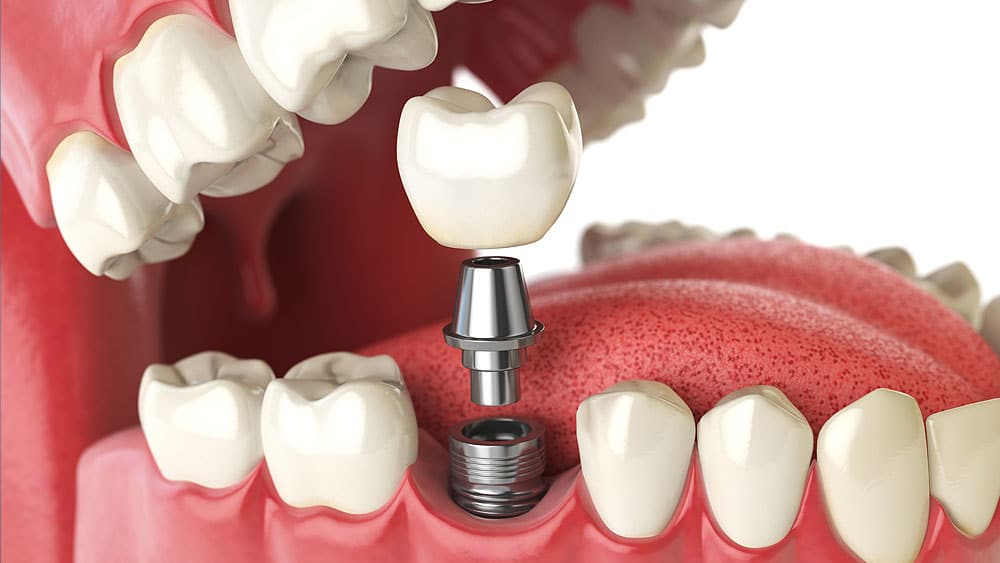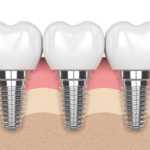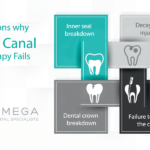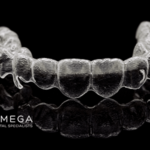Do I Need Bone Graft For Dental Implants?

What Happens if You Don’t Have Enough Bone for Dental Implants?
A bone graft is needed if there is an insufficient bone in the area of surgical consideration. This procedure involves taking your own bone from other areas of the body where it is considered more replicable and then grafting it to your maxillary or mandible to build enough volume to support an implant. Usually, the bone is taken from other areas of the mouth to minimize the number of surgical sites needed and also to further bond well with the existing bone—and that helps speed recovery time after a procedure like this.
Table of Contents
How Long Does It Take to Recover from a Dental Bone Graft?
There’s no exact time frame for patient recovery, as it is not unheard of for it to take anywhere from two to three months to an entire year for the bone graft to fuse with the jaw bone. However, several known aspects that can influence healing time are as follows: oral hygiene, pre-existing medical conditions, post-operative treatment.
Poor oral hygiene usually goes hand-in-hand with medical conditions such as diabetes malleus or periodontitis, which had adverse effects on blood flow and through that, wound healing. Particularly for post-operative care, consideration must be given for the types of food ingested, as it’s preferable to stick to cold fluids or other soft foods. This helps with recovery both in terms of hygiene and comfort as you eat and drink. It is also recommended to avoid sleeping on the side that was operated on in order to prevent unnecessary pressure on the affected area.
One thing to note it’s wise to avoid using straws during recovery as the negative pressure caused by the sucking motion could dislodge blood clots at the surgical site, disrupting the healing process. This is a common piece of advice given for tooth extractions, to avoid the use of straws—and it also holds true for all kinds of oral surgery.
Do I Have Too Much Bone Loss for Implants?
The long-term success of dental implants requires the evaluation of more than 50 dental criteria, many of which are unique to this discipline. However, the doctor’s training and experience and the amount and density of the available bone in the edentulous site of the patient are arguably primary determining factors in predicting individual patient success.
In the past, the available bone was not modified and was the primary intraoral factor influencing the treatment plan. Today, the prosthodontic needs and desires of the patient should be first determined, relative to the number and position of missing teeth. After the intended prosthesis is designed, the patient force factors and bone density are then evaluated. The key implant positions, implant number, and size are determined. After these factors are considered, the most important element in the implant region is the available bone.
The category and design of the final prosthesis and key implant positions are first determined after a patient consultation and evaluation of existing medical and dental conditions. The patient force factors and bone density are of particular note. The abutments necessary to support the restoration are then established in implant number and size and without initial regard to the available bone conditions. Available bone describes the amount of bone in the edentulous area considered for implant placement. It is measured in width, height, length, angulation, and crown height space.
Historically, the available bone was not modified and dictated the implant position and size. Today, if the bone is inadequate to support an ideal abutment for the intended prosthesis or bone grafting, the ideal site is often indicated or an alternative site may be considered. As a general guideline, 1.5 to 2 mm of surgical error is maintained between the implant and any adjacent landmark. This is especially critical when the opposing landmark is the mandibular inferior alveolar nerve. However, the implant may be placed without complication through the cortical plate of the maxillary sinus or inferior border of the mandible. The implant may also be positioned closer to the cribriform plate of a natural tooth. If the implant should become mobile or affected by a peri-implant disease, the adjacent landmark may be adversely involved.
Likewise, if the sinus becomes infected or the adjacent tooth suffers from periodontal disease, the implant may be affected. Manufacturers describe the root form implant in dimensions of width and length. The implant length corresponds to the height of available bone. The width of a root form implant is most often related to the diameter and mesiodistal length of the patient’s available bone. Most root form implants have a round cross-sectional design to aid in surgical placement. Therefore, the diameter of the implant corresponds to the implant width. Many manufacturers propose implants with a crest module wider than the implant body dimension.
Yet the oft-stated dimension of the manufacturer is the smaller body width. The clinician should be knowledgeable of all implant dimensions, especially because the crestal dimension of bone (where the wider crest module dimension is placed) is usually the narrowest region of the available bone and where the implant is closest to an adjacent tooth. All teeth are not equal when considered as abutments for a prosthesis. The restoring dental professional knows how to evaluate the surface area of the natural abutment roots. A healthy maxillary first molar with more than 450 mm of root surface area constitutes a better abutment for a fixed prosthesis than a mandibular lateral incisor with 150 mm of root support. The larger diameter teeth correspond to the regions of the mouth with greater bite force. It is interesting to note most of the increase in surface area for natural teeth is most dependent upon the diameter and a change in design, more so than length.
How Painful is Dental Bone Grafting?
Bone grafts shouldn’t be painful at all since patients are typically sedated throughout the entire process through local anesthesia. Dentists will generally choose lidocaine or articaine. Depending on the position and depth and size of the bone graft, they may also perform infiltration anesthesia or nerve block anesthesia.
Generally, no pain should be felt after the procedure. However, discomfort has been reported in patients, though it should be bearable and akin to the ache after typical tooth removal. Your dentist should prescribe NSAIDs such as acetaminophen or ibuprofen for the swelling and soreness, along with antibiotics, which are important to take as a preventative against possible infections. Bone grafting is considered a type of surgery, so by reducing the chance of infections, this speeds up healing and reduces the risk of painful complications.
During recovery, avoid putting pressure on the surgical site and remember to apply ice at frequent intervals during the first 24 to 72 hours after the procedure. The icing will help prevent blood influx in the mucosal gum tissue—and that lessens the swelling and hematoma, which is one issue that can cause discomfort if untreated.
What is the most important factor in choosing a proper implant?
The primary criterion for proper implant support is the amount of available bone. Four divisions of available bone, based on the width, height, length, angulation, and crown height space in the edentulous site, have been presented. Consistent implant treatment plan procedures elaborated for each category of bone may be followed. Treatment options may be selected in light of the area to be treated. If the existing conditions do not qualify for a predictable result, the patient’s mind or mouth must be modified. For example, the expectations of the patient must be reduced so the prosthesis may be changed, or the bone must be augmented to improve the height and width and change the division so that long-term implant support and prosthetic design will be compatible.
Whatever decisions are made, the dentist must communicate the many factors involved in the patient so that he/she is aware of how choices were reached. Above all, the most optimal outcome is the driving force in dental implant procedures.
Can You Get an Implant Without a Bone Graft?
Bone grafts are not always required for dental implants, but they are very common with this procedure. Several gum diseases, such as peritonitis and severe gingivitis, will negatively impact the available bone needed for dental implantation. Gingival recession weakens the mucosal structure of the gums, which in turn, may lead to exposure and crippling of the periodontal ligaments that connect the cementum (the outer layer of the root of the tooth) to the alveolar bone.
The time around when you lost your teeth to when the surgical procedure can be completed is of concern as well. Without the tooth and its resulting pressure, bone cells tend to atrophy, which will result in bone loss over time. The longer the tooth socket has been empty, the more bone loss you will experience—which increases the need for bone grafts. While it’s true that ossification (the formation of bone) continues within a tooth socket after the loss of a tooth, the reabsorption rate generally exceeds the ossification rate. In cases where the bone loss is too great, a bone graft is recommended for better osteointegration.
Additionally, whichever type of dental restoration you’re undertaking affects the chance of getting a bone graft or not. If there are supporting dentures or a large dental bridge with wide artificial teeth, that can lessen the need for bone grafts provided the natural bone is sufficiently strong enough. Orthodontics and your bite pattern also play an important role in this. Malocclusion, such as overjet or overbite, can put unnecessary or increased pressure on the dental implant or bridge, which in turn would require a stronger bone graft to recompensate for the higher bite force. How the patient bites is also another point to consider.
-
February 15, 2023What Is The Average Cost Of Braces In Houston?
-
February 01, 2023What You Need to Know About Dental Hygienists?
-
January 30, 2023What to Expect During the Wisdom Teeth Extraction
-
October 23, 2022Wisdom Tooth Removal Cost
-
October 23, 2022Dental Emergency, Open Saturday
-
October 23, 2022Full Guide to Dental Crown
-
July 26, 2022Should I Have My Wisdom Teeth Removed Before I Get Braces?
-
July 26, 2022Complete Guide to Wisdom Tooth Removal





